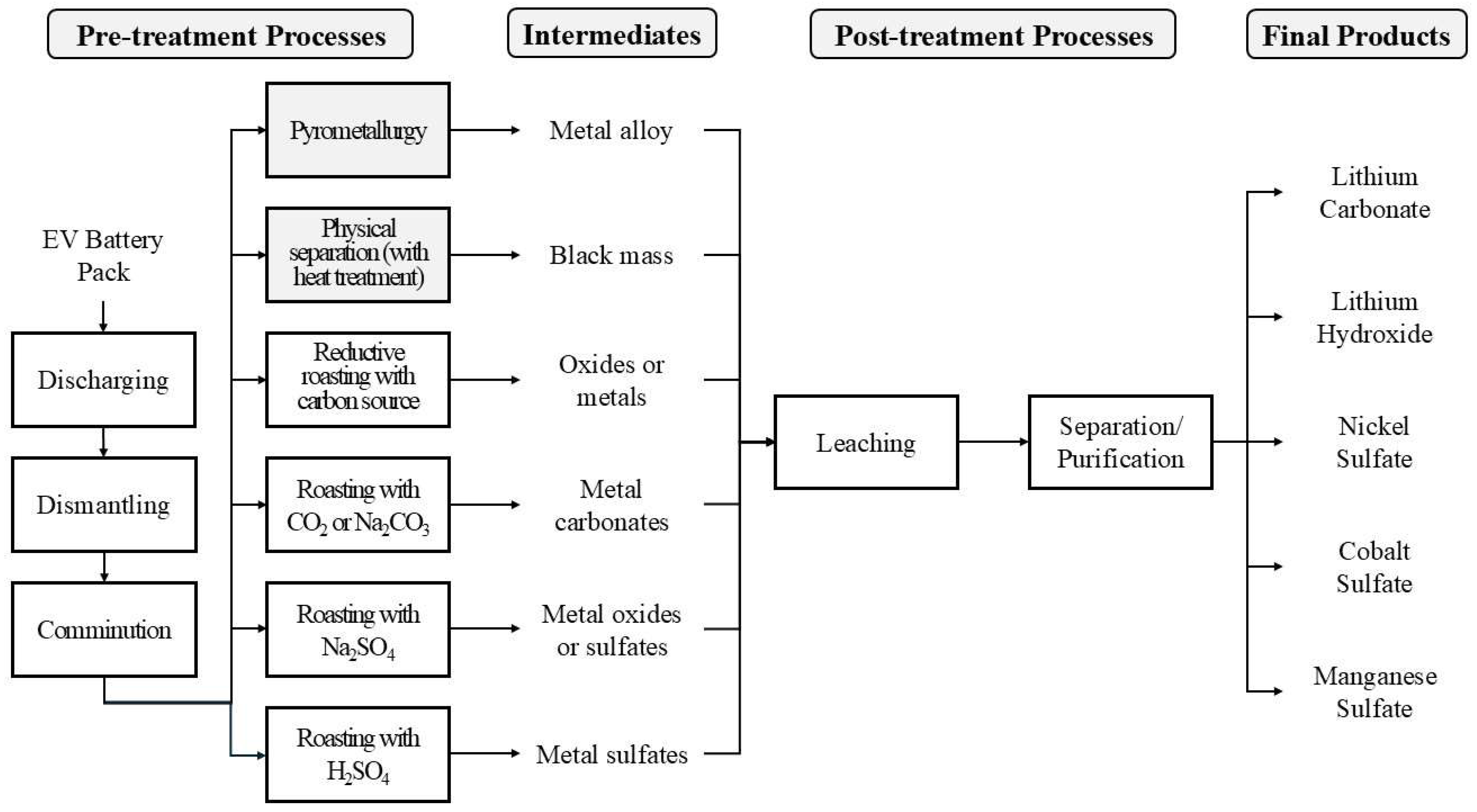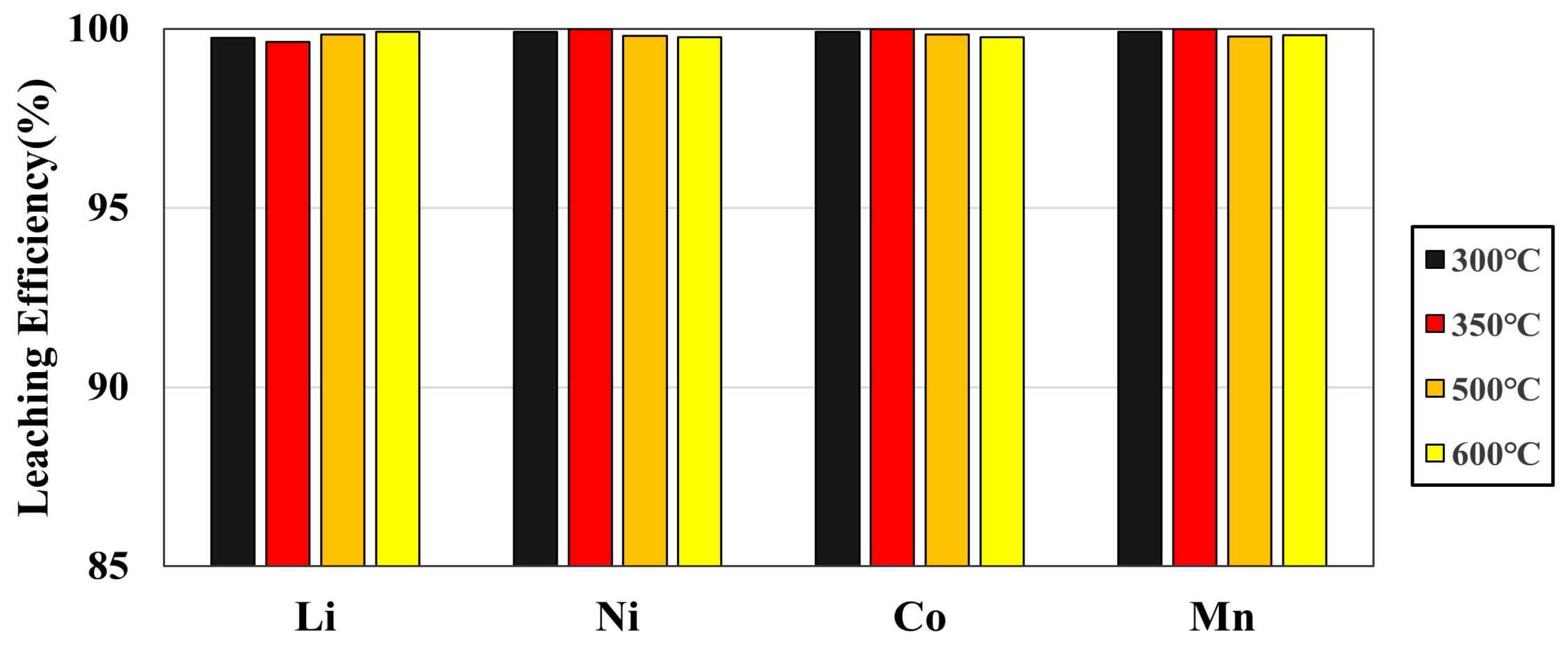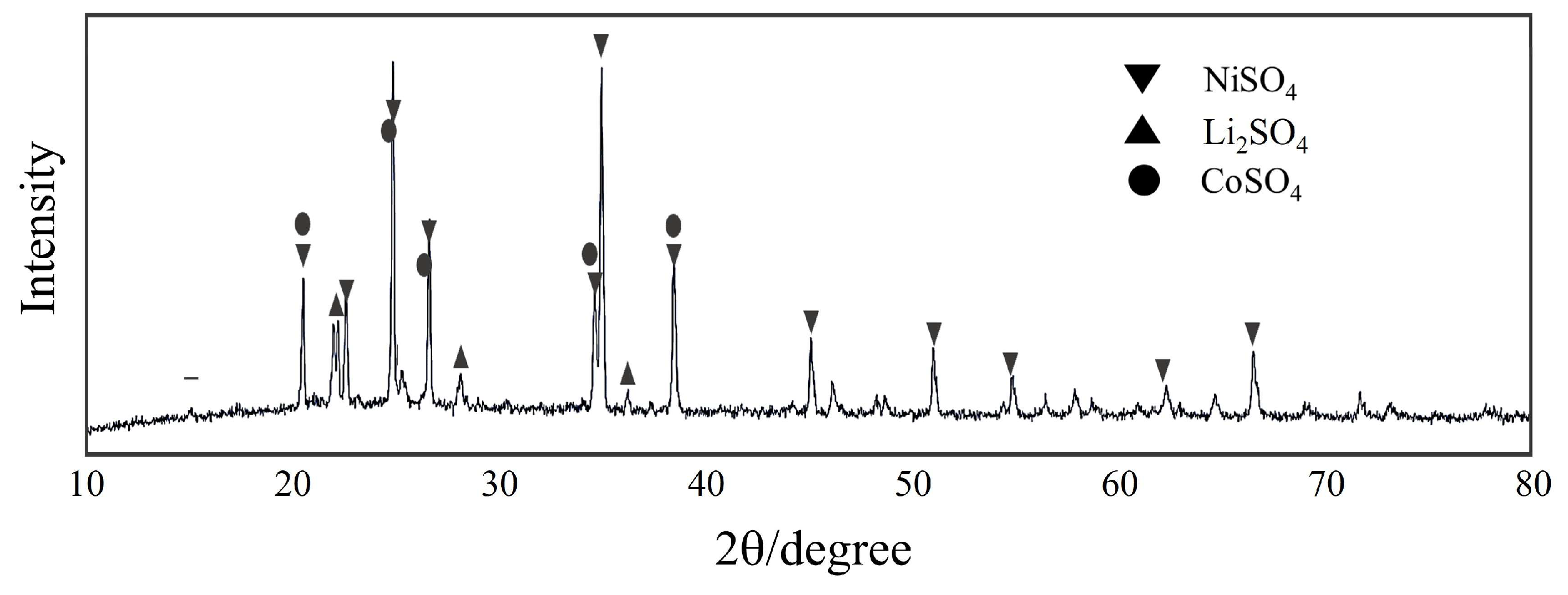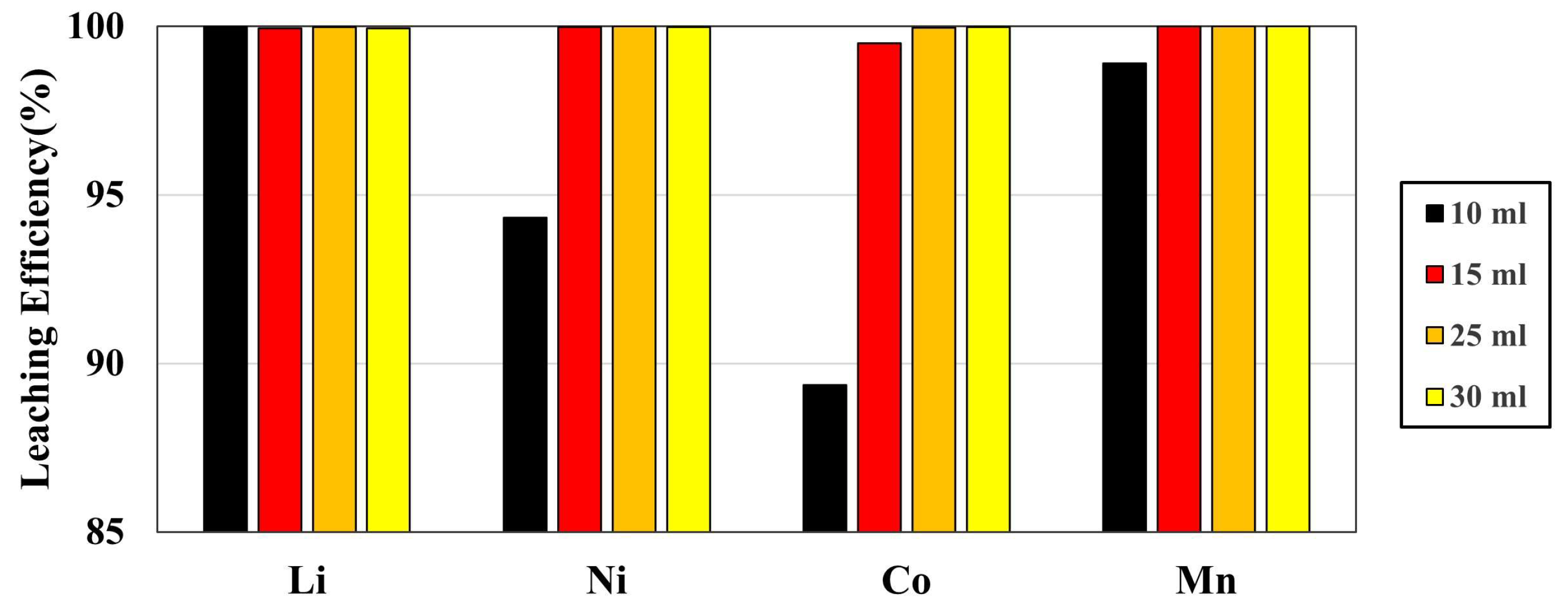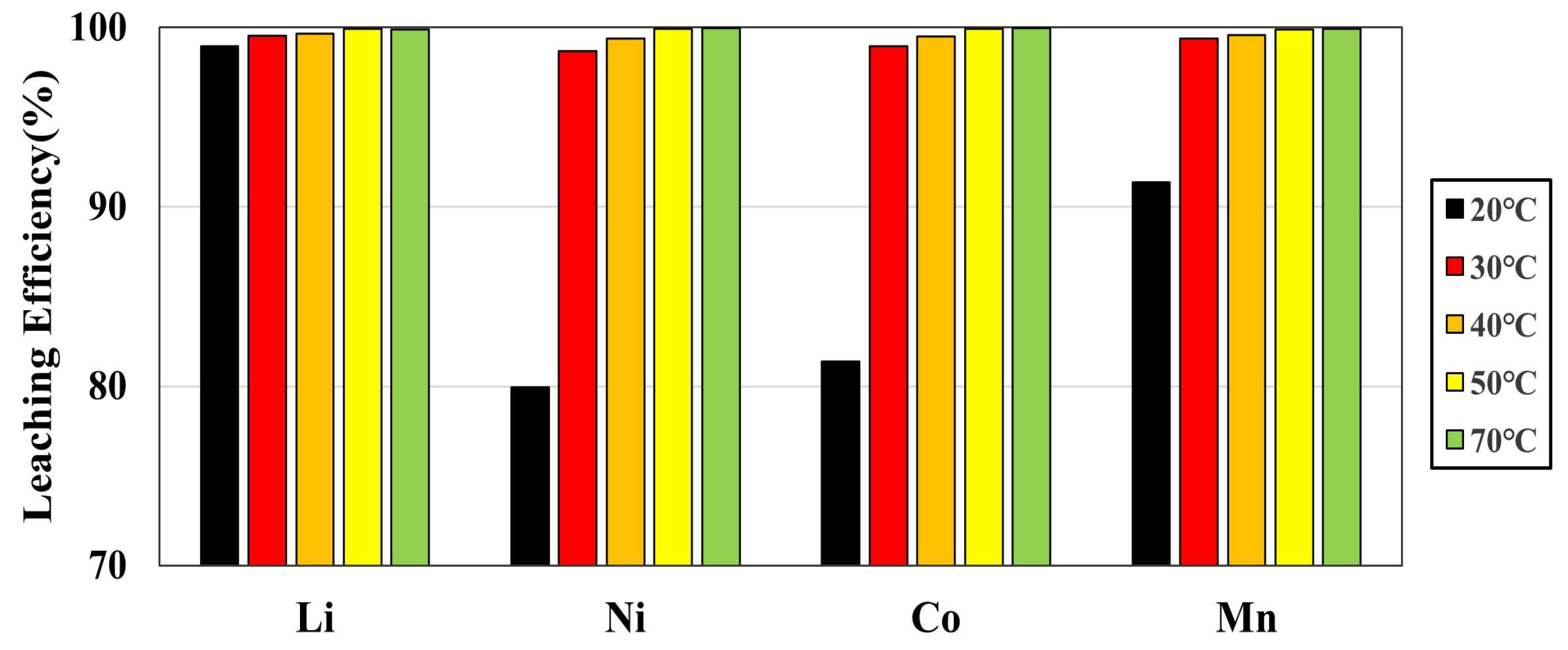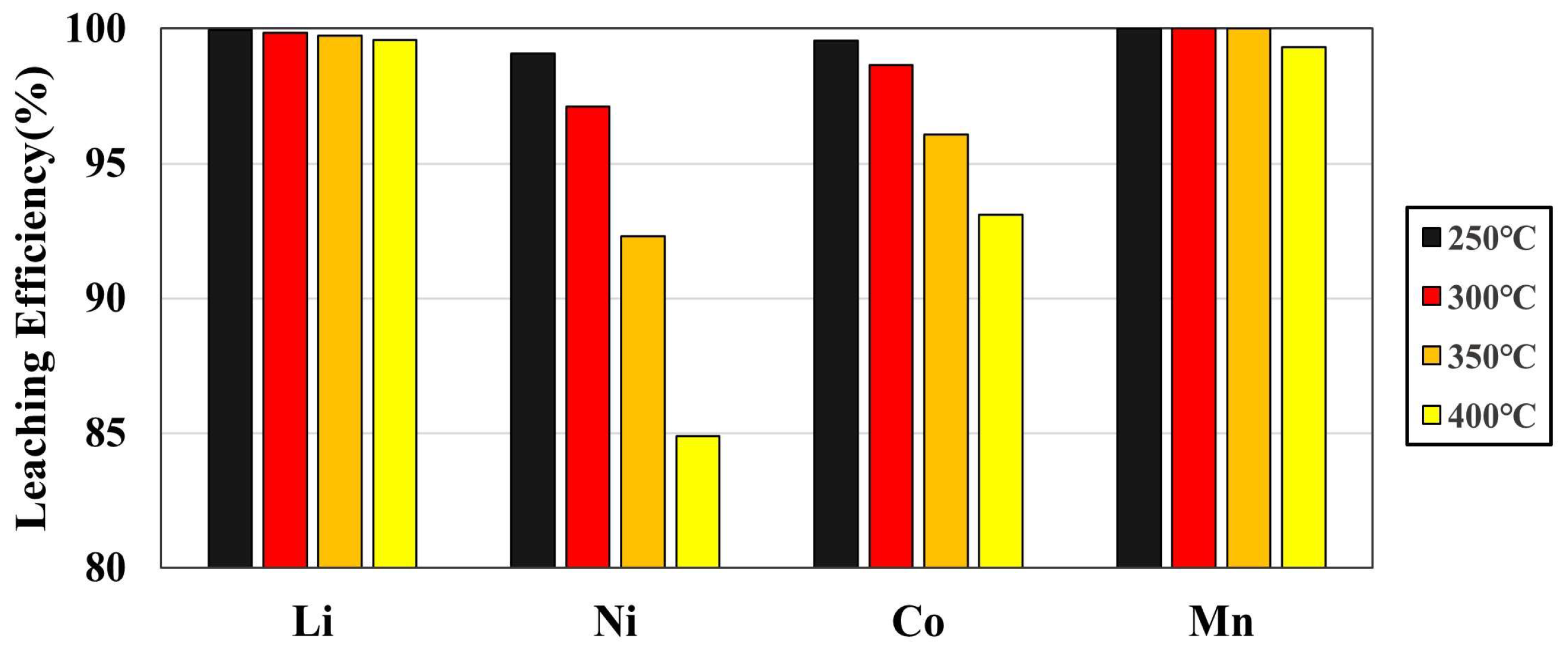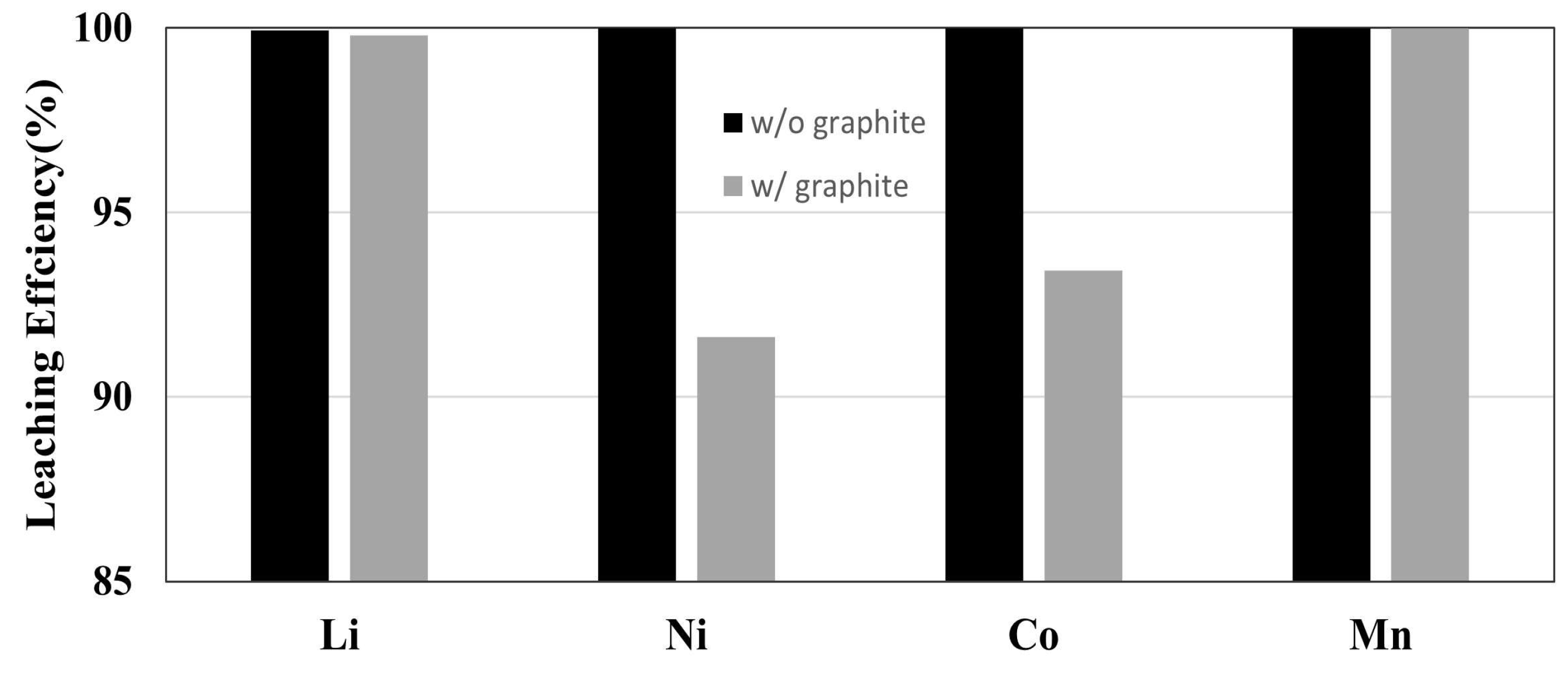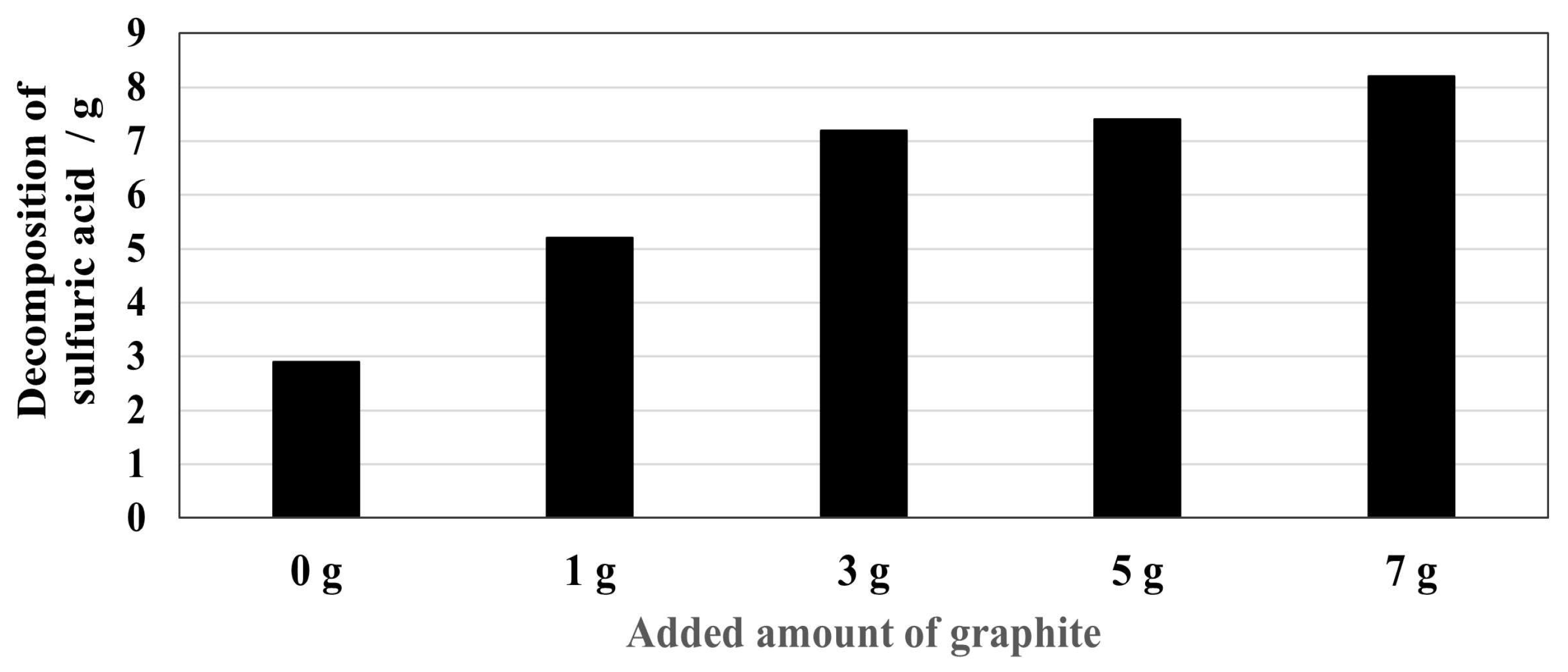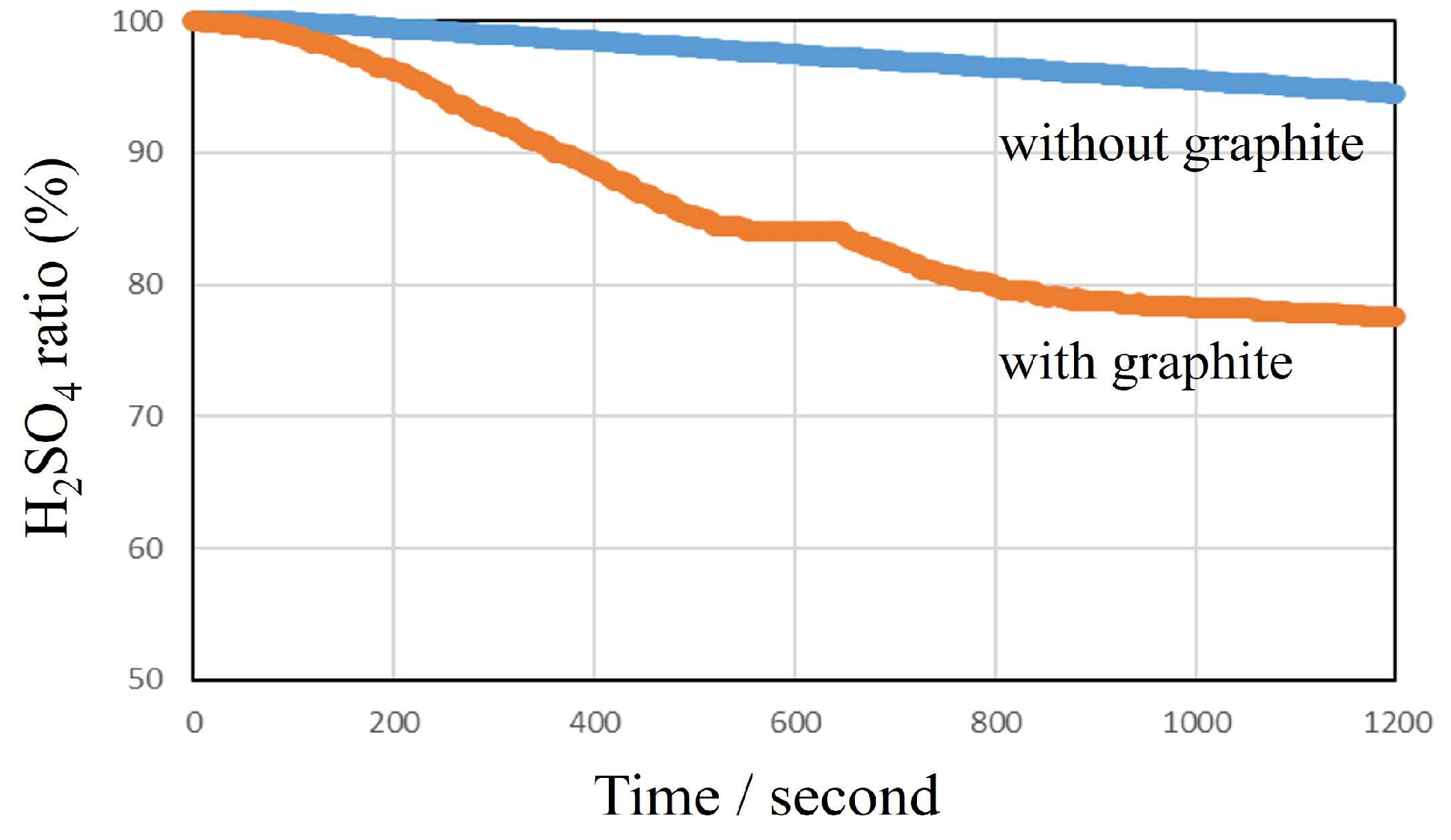1. Introduction
The Paris Agreement, adopted at UNFCCC COP21 in December 2015 and enforced from November 2016, aims to limit global warming to 1.5 °C, which led the Korean government to declare Carbon Neutrality in 2020 and establish the ‘2050 Carbon Neutrality Scenario’ that promotes electric vehicles as part of its strategy to reduce carbon emissions from transportation [
1,
2]. The battery demand and supply outlook of global electric vehicles, reported by SNE research, indicates that electric vehicle battery demand is projected to grow more than 20 times from 197 GWh in 2020 to 4028 GWh by 2030 [
2,
3]. The EU Battery Regulation implemented in 2024 applies to various batteries sold within the EU region, including industrial and electric vehicle batteries, mandating specific percentages of recycled metals: 16% cobalt, 6% lithium, and 6% nickel by August 2031, increasing to 26% cobalt, 12% lithium, and 15% nickel by August 2036 [
2].
With this increasing demand for electric vehicle batteries and stringent recycling requirements, efficient battery recycling systems are becoming essential for sustainable resource management [
1,
2,
3,
4,
5]. Korea, a resource-poor country that imports over 99% of its metal resources, has promoted recycling industries for a stable resource supply [
6]. Sungeel Hitech Co., Ltd., a leading lithium-ion battery recycler, has been operating commercial processes since 2011 using technology acquired through government-supported R&D projects, with its recycling process distinctly divided into preprocessing (“Recycling Park”) and hydrometallurgical (“Hydrocenter”) operations [
2]. Though successfully operating its recycling business since 2011, recently new recycling processes are being developed to improve efficiency by addressing limitations in Sungeel Hitech’s current methods, particularly challenges associated with hydrogen peroxide usage [
7,
8]. Various alternative recycling technologies are emerging to overcome these process difficulties and enhance overall operational performance in lithium-ion battery recycling [
1,
2,
9,
10,
11,
12,
13]. Pyrometallurgical processes have already been commercialized as alternatives to conventional recycling methods [
12], and research on individual sub-processes has been conducted to replace conventional lithium-ion battery recycling processes [
9,
10], including the recovery of previously discarded graphite [
13]. Recently, considerable attention has been given to the fact that the efficiency of post-treatment processes is largely determined by pre-treatment processes, leading to extensive research focused on optimizing pre-treatment procedures [
1,
2,
9,
10].
Since Sungeel Hitech’s recycling process includes thermal treatment steps conducted at approximately 700 °C, roasting processes that produce various intermediate products at similar temperature ranges have been extensively studied. In
Figure 1, these alternative recycling processes involving roasting are summarized [
2]. As lithium-ion battery recycling processes produce metal compounds such as sulfates, carbonates, and hydroxides for use as lithium-ion battery raw materials [
2,
4,
9], these processes can be classified according to the type of intermediate products. Various recycling processes have been researched to replace Sungeel Hitech’s current process, which produces black mass through a combination of physical separation and thermal treatment.
Sulfuric acid roasting processes have been developed for the intermediate processing of lithium and rare earth ores, with commercial processes currently in use [
14,
15]. Recently, sulfuric acid roasting has been investigated to recover lithium selectively [
16,
17,
18] or graphite [
19] from spent lithium-ion batteries. In these processes, sulfuric acid is mixed with lithium-ion battery materials, dried at 130 °C, and subsequently subjected to a roasting treatment [
16,
17,
18,
19]. Although spent lithium-ion batteries contain a complex mixture of cathode materials (primarily lithium metal oxides containing Ni, Co, and Mn) and anode materials (predominantly graphite), the effects of graphite have not been examined during LIB recycling processes.
In the present study, LIB samples were mixed with sulfuric acid and directly subjected to the roasting process without a preliminary drying step, followed by water leaching to observe the leaching behavior of major metals such as Li, Ni, Co, and Mn. In particular, this study investigated the effects of graphite being present during the roasting process on metal dissolution.
2. Materials and Methods
Two types of samples were utilized in this study: cathode active material scrap powder sourced from a Korean cell manufacturer and black mass obtained from a Korean recycling company. The black mass represents a mixture of cathode and anode active materials recovered from processed waste batteries. For initial metal content analysis, both samples underwent acid digestion using aqua regia at 200 °C for 2 h in a microwave digestion system (Milestone ETHOS UP, Milestone S.r.l., Sorisole, Italy). The digested solutions were analyzed using Inductively Coupled Plasma Optical Emission Spectrometry (ICP-OES, Perkin Elmer OPTIMA 8300) to analyze the metal content, including lithium, nickel, cobalt, and manganese and the metal contents are shown in
Table 1. These compositional data indicate that the cathode scrap consists of a mixture of NCM111 and NCM 622, while the black mass appears to be derived from NCM 622 and NCM811 materials. The sulfuric acid (Junsei Chemical Co., Ltd., Tokyo, Japan) with 95% purity and graphite powder (Samchun Pure Chemical Co., Ltd., Pyeongtaek, Republic of Korea) of chemical grade were used for the sulfation roasting process, and all other reagents used were of analytical grade.
In a typical run, 10 g of LIB sample was mixed with 10 mL to 30 mL of sulfuric acid in a quartz crucible and then set in a muffle furnace (FHX-12, DAIHAN Scientific Co., Ltd., Wonju, Republic of Korea). The temperature gradually increased from 250 °C to 600 °C at a heating rate of 2 °C/min for the roasting process. Upon reaching the target temperature, roasting continued while maintaining this temperature for one hour. The 10 g of roasted product was added to 200 mL distilled-deionized water (DDW), and then leaching tests were performed at 30 °C–70 °C in temperature and 200 rpm in agitation speed for 60 min. In preliminary tests, the leaching efficiency showed no significant changes after 15 min, and the effect of stirring speed on leaching efficiency was negligible. Therefore, in this study, the leaching time was fixed at 1 h and the stirring speed was maintained at 200 rpm.
After the leaching test, the metal concentration in the leach solution were measured with ICP-OES (OPTIMA 8300, Perkin Elmer Inc., Waltham, MA, USA) and the metal content in the leach residue was analyzed with the ICP-OES after the residue was digested with
aqua regia. The leaching efficiencies of metals such as Li, Ni, Co, Mn were obtained using the following equation.
where M
solution and M
residue represent the mass of metals in the leach solution and residue, respectively. The roasted product was analyzed with an X-ray diffractometer (SmartLab, Rigaku Co., Ltd., Tokyo, Japan) with Cu Kα radiation. The patterns were recorded in the 2θ range of 10–80° with a step size of 0.5°.
3. Results and Discussion
The boiling point of sulfuric acid has been found to be 337 °C. The effect of temperature on the sulfuric acid roasting was investigated in the temperature range from 300 °C to 600 °C. The sulfuric acid roasting was performed with the mixture of 10 g of cathode active material scrap powder and 15 mL of 95% sulfuric acid for 1 h. The leaching test was conducted at 50 °C and 200 rpm with 5% pulp density for 1 h. The leaching results at roasting temperatures from 300 °C to 600 °C are shown in
Figure 2. The leaching efficiencies of all metals (Li, Ni, Co, and Mn) reached at least 99.5% across the entire tested roasting temperature range (300–600 °C). The XRD pattern shows the presence of NiSO
4, Li
2SO
4, and CoSO
4 as the main crystalline phases. Despite the high leaching efficiencies of manganese observed in our experiments, the characteristic peaks of MnSO
4 were not clearly identified in the XRD pattern. This result indicates that the metals are successfully dissolved by the recycling process consisting of roasting and water leaching, and that the optimal roasting temperature was determined to be 300 °C under these roasting conditions.
The reaction between LIB samples and sulfuric acid results in the formation of metal sulfates as follows [
16].
where Me represents the transition metals such as Ni, Co, and Mn, which exist as Ni
xCo
yMn
z (x + y + z = 1).
Figure 3 shows the XRD pattern of product roasted at 500 °C. This XRD pattern indicates that the metals except Mn in cathode scrap were converted into sulfate forms. Since these metal sulfates can be dissolved in water, high leaching efficiencies can be obtained, as reported in
Figure 2.
The effect of mixing ratio on sulfuric acid roasting was investigated by preparing mixtures containing 10 g of cathode scrap with varying amounts (10–30 mL) of 95% sulfuric acid. The sulfuric-acid roasting was performed with the mixture of 10 g of cathode active material scrap powder and 15 mL to 30 mL of 95% sulfuric acid at 350 °C for 1 h. The leaching test was conducted at 50 °C and 200 rpm with 5% pulp density for 1 h. As can be seen in
Figure 4, lithium showed leaching efficiencies exceeding 99.9% under all mixing ratio conditions; however, the other three metals (nickel, cobalt, and manganese) did not achieve 99.9% leaching efficiency when mixed with only 10 mL of sulfuric acid. Notably, cobalt exhibited leaching efficiencies of 89.4% and 99.5% when mixed with 10 mL and 15 mL of sulfuric acid, respectively. When the sulfuric acid amount was increased to 25 mL, all four metals achieved leaching efficiencies above 99.9%. Based on the weighted average atomic mass of Ni, Co, and Mn (calculated to be 57.8 g/mol), the 10 g of cathode scrap containing these metals is equivalent to approximately 0.1 mole. Lithium sulfate (Li
2SO
4) has a 1:2 molar ratio between lithium and sulfate, while metal sulfates such as NiSO
4 maintain a 1:1 molar ratio. Theoretically, 0.15 mole of sulfuric acid is required to convert the metals such as Li, Ni, Co, and Mn in the cathode scrap into their respective sulfates. Although 10 mL of 95% sulfuric acid corresponds to 0.18 mole, which is theoretically sufficient, the experimental results showed that this amount was inadequate for complete conversion. A significantly higher amount of 25 mL (0.45 mole) of sulfuric acid was required to achieve complete metal sulfate formation, which corresponds to three times the theoretical stoichiometric requirement of 0.15 mole.
The leaching tests were performed at 20~50 °C and 200 rpm with 5% pulp density for 1 h, using the product roasted at 500 °C for 1 h with 3 mL H
2SO
4/g sample to investigate the effect of leaching temperature on the leaching efficiencies.
Figure 5 shows clearly that leaching efficiencies increased with increasing temperature, where the leching efficiencies reached 99.9% at temperatures of 50 °C and above.
Generally, black mass contains graphite as anode active materials as well as cathode active materials. Although research on the recovery of graphite from black mass using a flotation process was performed [
20], the separation of cathode and anode active materials is not currently a standard process. Therefore, a recycling process consisting of sulfuric acid roasting followed by water leaching was tested with the black mass sample. The sulfuric acid roasting was performed with a mixture of 10 g of cathode active material scrap powder and 25 mL of 95% sulfuric acid for 1 h. The leaching test was conducted at 50 °C and 200 rpm with 5% pulp density for 1 h. The leaching results at roasting temperatures from 250 °C to 400 °C are shown in
Figure 6. The leaching efficiencies decreased with increasing roasting temperature from 250 °C to 400 °C, with nickel and cobalt achieving >99% recovery at 250 °C but declining to 84.9% and 93.1%, respectively, at 400 °C roasting temperature. The black mass was obtained by dismantling and crushing a spent battery pack, while the cathode scrap was obtained from battery manufacturing processes. Therefore, another sample was prepared by adding graphite reagent to the cathode scrap to investigate the effect of graphite on the sulfuric acid roasting process.
Two kinds of samples were prepared, one consisting of 10 g of cathode scrap (without graphite) and the other containing 5 g of cathode scrap and 5 g of graphite powder (with graphite). The samples were roasted at 350 °C for 1 h with 2.5 mL H
2SO
4/g sample, and subsequently leached at 50 °C and 200 rpm with 5% pulp density for 1 h. As shown in
Figure 7, the cathode scrap without graphite exhibited leaching efficiencies exceeding 99.9%, whereas the samples containing graphite showed comparatively lower leaching efficiencies for nickel and cobalt at 91.6% and 93.4%, respectively. Despite the graphite-containing samples having only half the amount of cathode material (5 g) and therefore receiving twice the relative sulfuric acid dosage, they demonstrated lower leaching efficiencies. This suggests that the presence of graphite adversely affects the leaching efficiencies of metals.
The effect of graphite on sulfuric acid decomposition was investigated as follows: Samples were prepared by adding varying amounts of graphite (0–7 g) to 25 mL of sulfuric acid, and subsequently, the samples were roasted at 350 °C for 30 min. The weights before and after roasting were measured to calculate the amount of decomposed sulfuric acid, and the results are presented in
Figure 8. The amount of decomposed sulfuric acid increased with increasing graphite content, indicating that graphite addition accelerates the decomposition of sulfuric acid.
Another test was performed to investigate the effect of graphite addition on the decomposition of sulfuric acid at 300 °C for 20 min with 1 g sulfuric acid with or without 0.5 g graphite. As shown in
Figure 9, the remaining sulfuric acid was 77.6% in the sample with graphite and 94.5% in the sample without graphite, demonstrating the accelerating effect of graphite on sulfuric acid decomposition.
The decomposition reaction of sulfuric acid results in the formation of sulfur trioxide and water as follows [
21].
This reaction primarily occurs at 350 °C [
21], although the process has been known to initiate gradually at temperatures as low as 300 °C, which was confirmed in the results shown in
Figure 9. Also, the reduction of sulfuric acid was reported as follows [
22].
Although the precise temperature range for this reaction has not been scientifically established in the reference [
22], experimental evidence indicates that carbon functions as a reducing agent, facilitating the decomposition of sulfuric acid into SO
2. Therefore, the presence of graphite accelerates the decomposition of sulfuric acid, which results in insufficient sulfuric acid for complete conversion of metals in the cathode material to sulfates, consequently leading to decreased leaching efficiencies.
Through the process proposed in this research, we have successfully obtained a leach solution containing lithium, nickel, cobalt, and manganese. Since Sungeel Hitech has already commercialized a process that uses solvent extraction and selective precipitation to separate these components from similar leach solutions and convert them into battery raw materials [
1,
2], applying these established commercial processes to our leach solution would effectively separate the individual metals without significant challenges. This connection to conventional industrial processes demonstrates the practical applicability of our research findings in a commercial context.
